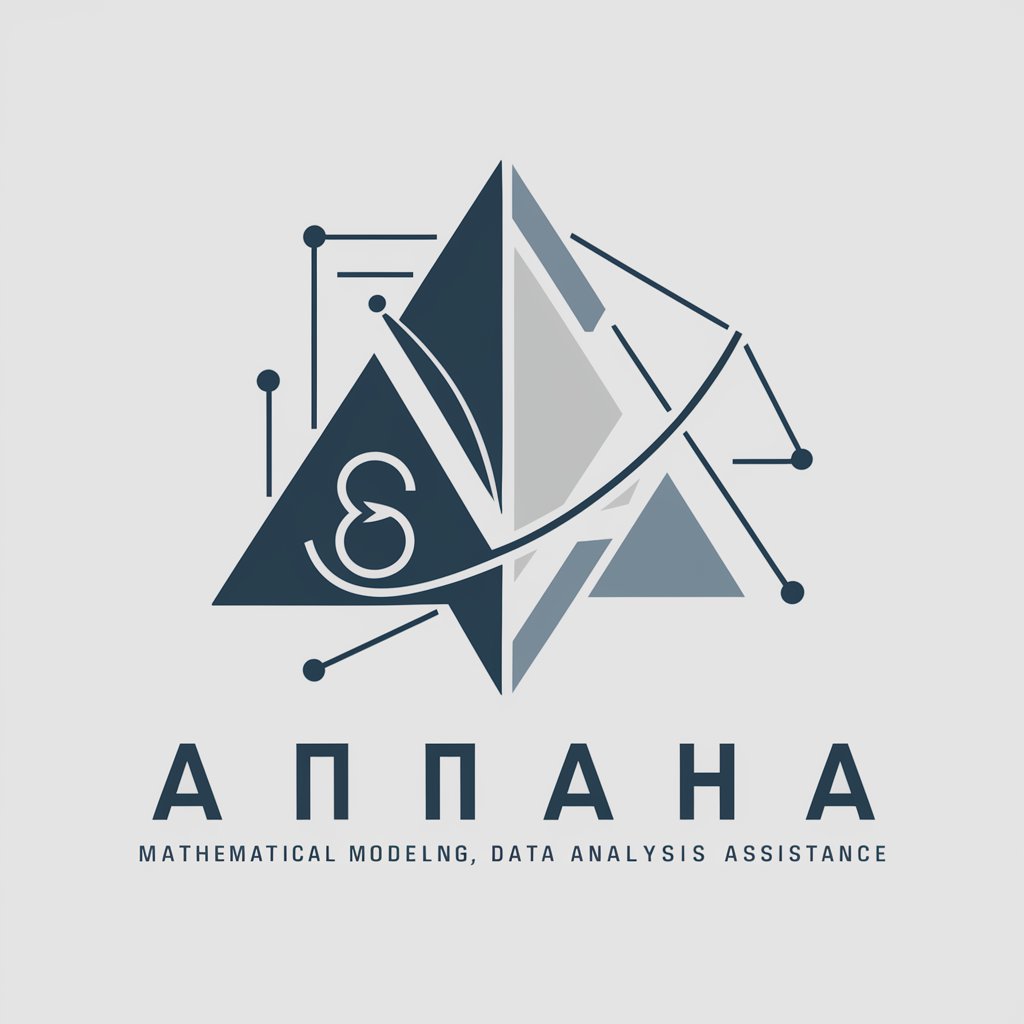数学建模 - Mathematical Modeling Aid

Welcome to 数学建模! Ready to explore the world of mathematical modeling and data analysis?
Empower Your Analysis with AI
Analyze the given dataset to identify patterns and trends...
Develop a mathematical model to solve the problem of...
Provide a detailed explanation of how to implement a...
Create a visualization to represent the data on...
Get Embed Code
Introduction to 数学建模
数学建模, or mathematical modeling, refers to the process of developing abstract models to represent real-world situations through mathematics. The purpose of 数学建模 is to use mathematical formulas, computations, and reasoning to solve complex problems, make predictions, or understand systems better. This involves translating problems from real-world contexts into mathematical languages, solving these problems using mathematical tools, and then interpreting the results back into real-world understanding. For example, a mathematical model could be developed to predict the spread of a virus in a population, optimize logistics operations for a delivery company, or simulate the effects of environmental policies on pollution levels. These models are essential for decision-making, policy development, and scientific research. Powered by ChatGPT-4o。

Main Functions of 数学建模
Problem Analysis and Model Formulation
Example
Analyzing the growth pattern of a company's sales and formulating a model to predict future sales.
Scenario
A business analyst uses historical sales data to develop a model that forecasts future sales under various marketing strategies.
Simulation and Optimization
Example
Creating a simulation of traffic flow to optimize the timing of traffic lights in an urban area.
Scenario
Urban planners model traffic patterns using mathematical modeling to reduce congestion and improve traffic flow, leading to better urban mobility.
Data Analysis and Interpretation
Example
Using statistical models to analyze customer data and derive insights on purchasing behavior.
Scenario
Marketing teams apply mathematical modeling to segment customers, predict purchasing trends, and tailor marketing strategies accordingly.
Decision Making Support
Example
Developing models to determine the optimal investment strategy for a portfolio based on risk assessment.
Scenario
Financial analysts use mathematical models to assess risk and optimize the allocation of assets in investment portfolios, aiming to maximize returns while minimizing risk.
Ideal Users of 数学建模 Services
Researchers and Academics
Individuals in scientific, engineering, economic, and social research fields who utilize mathematical modeling to explore theories, test hypotheses, and analyze data.
Industry Professionals
Professionals in finance, logistics, urban planning, environmental management, and other sectors where decision-making is enhanced by predictive modeling, optimization, and risk analysis.
Policy Makers and Government Agencies
Individuals and organizations involved in crafting policies and strategies that require understanding complex systems, forecasting outcomes, and evaluating policy impacts through mathematical models.
Students and Educators
Learners and teachers engaged in the study and instruction of mathematical modeling as a tool for problem-solving and critical thinking in various academic disciplines.

How to Use 数学建模
1
Begin by visiting yeschat.ai for a complimentary trial, accessible immediately without the need for a login or ChatGPT Plus subscription.
2
Identify the mathematical modeling challenge or question you need assistance with. This could range from academic research, data analysis, to real-world problem solving.
3
Use the provided text box to input your question or problem statement. Be as specific and detailed as possible to ensure an accurate and comprehensive response.
4
Review the generated solution or advice. This may include mathematical formulas, data analysis techniques, code snippets, or modeling strategies.
5
Apply the provided solution to your problem. If necessary, iterate on your question based on the feedback and generate further advice for refinement.
Try other advanced and practical GPTs
数学建模
Empower Your Math Modeling with AI

2024个人风水指数(生肖版)
Harness AI for Personalized Feng Shui Guidance

数鼠
Empowering Analysis with AI

奥数
Master Math with AI

心灵指南
Empowering Decisions with AI

Stock Wizard
Empowering your investment journey with AI.

妄想と考察のあいだに
Visualize Imagination with AI

AI占い師あわやん
Navigate your destiny with AI-powered Chinese astrology

さのあい(SANOAI)
Explore Sano City with AI

チャット JPT
Empowering communication with AI

問題解決チャット
Unlock solutions with AI intelligence

ZOOMチャット整理代行ボット
Streamline your Zoom chats effortlessly with AI.

Detailed Q&A on 数学建模
What types of mathematical problems can 数学建模 solve?
数学建模 can assist with a wide range of mathematical problems, including but not limited to statistical analysis, optimization problems, predictive modeling, and simulations of complex systems.
Can 数学建模 help with academic research?
Yes, it is particularly useful for academic researchers needing to develop, validate, or refine mathematical models for their research projects, offering tools for data analysis, literature review assistance, and model development.
How does 数学建模 assist in code development?
It provides support for code development related to mathematical modeling and data analysis, including algorithm design, syntax correction, and performance optimization tips.
Is 数学建模 suitable for beginners in mathematical modeling?
Absolutely. It offers guidance tailored to the user's expertise level, explaining complex concepts in accessible language and suggesting learning resources.
Can 数学建模 be used for commercial purposes?
Yes, it can assist businesses in analyzing data, forecasting trends, optimizing operations, and solving industry-specific mathematical problems.
